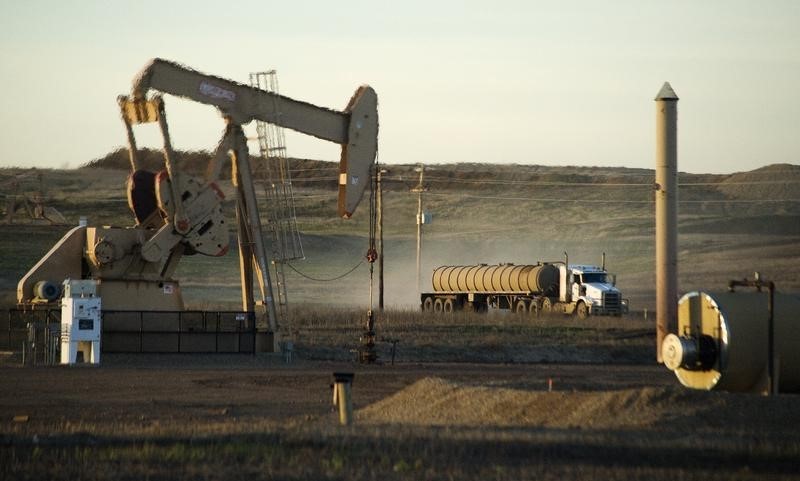Street Calls of the Week
Investing.com--Oil prices rose Friday, bouncing after steep losses a day earlier, after the International Energy Agency highlighted a tight prompt market, while traders speculated on possible further sanctions on Russia.
At 08:35 ET (12:35 GMT), Brent Oil Futures expiring in September rose 0.9% to $69.25 per barrel, while West Texas Intermediate (WTI) crude futures gained 0.9% to $67.19 per barrel.
Crude market looks tight - IEA
The world oil market may be tighter than it appears, the International Energy Agency said on Friday, as refineries ramp up processing to meet summer travel demand.
The IEA, which advises industrialised countries, expects global supply to rise by 2.1 million barrels per day this year, up 300,000 bpd from the previous forecast. World demand will rise by just 700,000 bpd, it said, implying a sizeable surplus.
Despite making those changes, the IEA said rising refinery processing rates to meet summer travel and power-generation demand were tightening the market and the latest, accelerated supply hike from OPEC+ on Saturday had not had much effect.
"The decision by OPEC+ to further accelerate the unwinding of production cuts failed to move markets in a meaningful way given tighter fundamentals," the agency said in a monthly report.
"Price indicators also point to a tighter physical oil market than suggested by the hefty surplus in our balances."
New Russian sanctions?
Also prompting crude price rises was U.S. President Donald Trump expressing frustration with Russian President Vladimir Putin due to the lack of progress on peace with Ukraine.
Trump said he plans to make a “major” statement on Russia on Monday, and this has lead to speculation that the U.S. may agree to additional sanctions on the major oil producer.
Trump’s tariffs weigh
Both contracts fell nearly 2% on Thursday from two-week highs reached earlier this week on concerns about global trade after Trump said that he would impose a 35% tariff on imports from Canada from August 1, threatening that the rate would go up if Canada retaliated.
Trump has escalated his trade action in recent days, having already slapped 25% duties on imports from South Korea, Japan, and a 50% tariff on copper imports, all effective Aug 1.
Tariffs often slow global growth by disrupting trade and raising costs, which in turn weakens industrial activity and travel, both major drivers of oil demand.
“Looking at downside risks, tariffs remain a potential drag on the market,” ING analysts said in a recent note.
OPEC+ supply outlook in focus
A Bloomberg report on Thursday stated that OPEC+ is discussing a pause in further production increases after its next monthly hike.
The Organization of the Petroleum Exporting Countries and its allies (OPEC+) is planning to finish restoring 2.2 million barrels of supply by September, with a final 550,000-barrel increase next month, the report said.
The cartel on Thursday lowered its global oil demand outlook for the next four years, citing a slowdown in China’s economic growth.
“While the return of these barrels from OPEC+ will lead to a better-supplied market, we will have to wait until the fourth quarter of the year before seeing the market move into surplus,” ING analysts said.
“We believe prices should come under more sustainable downward pressure from the fourth quarter of this year onwards,” they added.
Ayushman Ojha contributed to this article
